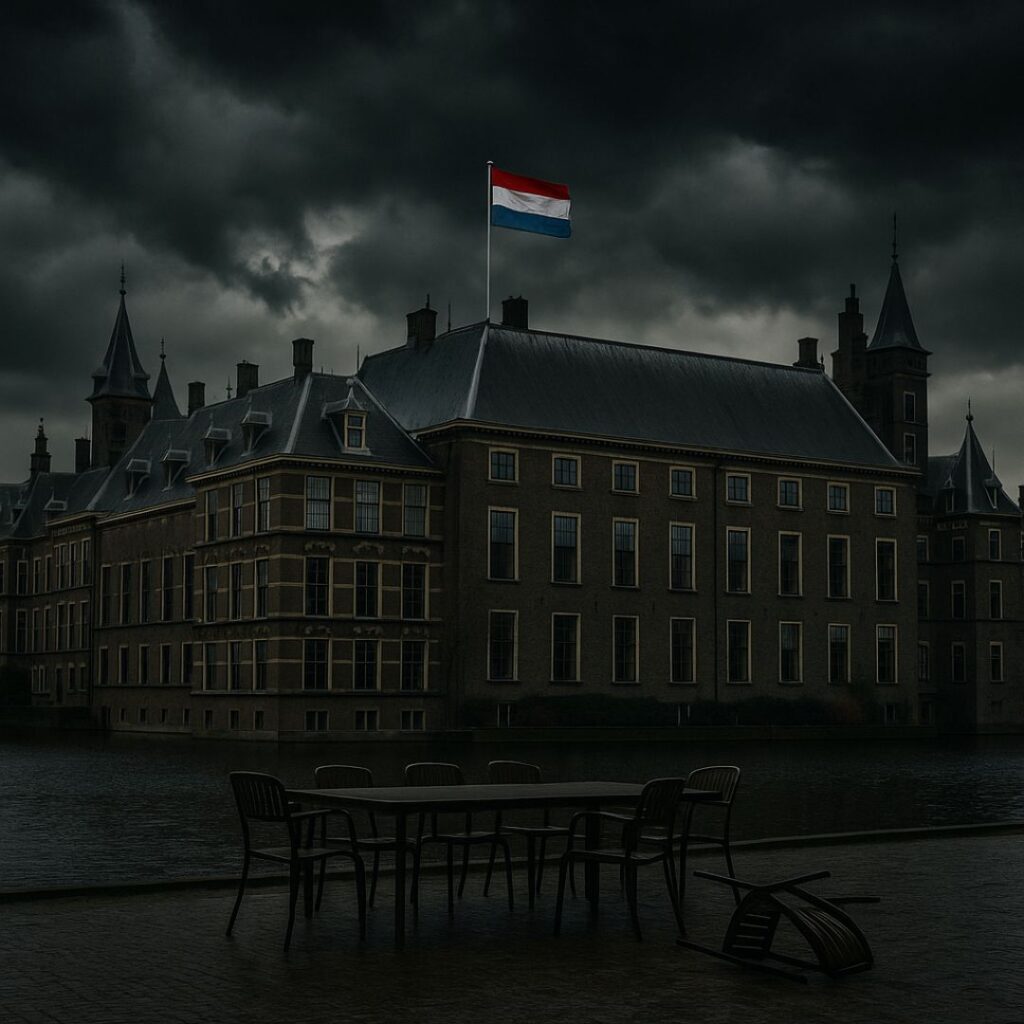When a coalition lacks alignment, no agreement holds.
A Fragile Coalition Meets a Final Deadline
On June 3, 2025, the Dutch coalition government led by Prime Minister Dick Schoof collapsed after Geert Wilders announced that the Party for Freedom (PVV) would no longer support it. The move ended a fragile partnership that had lasted less than a year.
- PVV withdraws support from the Schoof-led coalition
- Trigger: dispute over Wilders’ 10-point immigration plan
- Coalition partners rejected the plan as redundant or unworkable
- Schoof resigns; elections expected in late 2025
- Careful timing: collapse occurred weeks before NATO summit in The Hague
The disagreement centered on Wilders’ proposed 10-point plan, which called for sweeping asylum restrictions. Measures included military deployment at the border, rejection of all new asylum claims, and the return of Syrian refugees. Coalition partners VVD, BBB, and NSC opposed the plan on legal and procedural grounds, noting that many points were already addressed in the existing agreement.
A final round of negotiations failed to bridge the divide. Within minutes of the last coalition meeting, Wilders announced his party’s withdrawal. The cabinet, unable to function without PVV’s support, resigned the same day.
The Roots of Collapse
This was not a sudden breakdown. The coalition had been strained since its formation in July 2024. Conflicts over immigration policy, EU relations, and ministerial performance surfaced early. Wilders, whose party won 37 seats in 2023, remained outside the cabinet but frequently clashed with both allies and opposition from his position in parliament.
Minister Marjolein Faber, appointed by the PVV to oversee asylum and migration, struggled to implement key proposals. Courts blocked major reforms. Legal institutions upheld existing protections. Tensions grew over the slow pace of change.
Critics of the collapse argue the decision was politically motivated. Polling data showed PVV’s support softening, while GroenLinks–PvdA gained traction. Analysts suggest Wilders sought to reframe the debate ahead of a new campaign. Others view the exit as a consequence of structural mismatch within the coalition.
What Happens Now
The caretaker government will remain in place through the summer, but major policy changes are unlikely. The NATO summit scheduled for late June will proceed under temporary leadership. Elections are expected in the autumn, with early polling showing a tight race between PVV and the Green–Labour alliance.
Public trust in politics continues to decline. A recent poll showed only 23 percent of Dutch citizens have confidence in national leadership. Among PVV voters, reactions to the collapse are mixed. Some view the decision as a necessary stand. Others question the timing and follow-through.
As attention shifts toward elections, questions remain. Will Wilders secure a stronger mandate? Will other parties again refuse to govern with him? And will the next coalition, whatever its composition, be able to govern more effectively?
As explored in Fit & Free: “Geo-arbitrage changed everything for me. Lower costs. More freedom. Less pressure.” For those watching these events from abroad, political instability is not just a headline. It is a reminder that where you live, and how you structure your life, can be a form of leverage.
In volatile systems, the strongest advantage is clarity. Build one that lasts.

